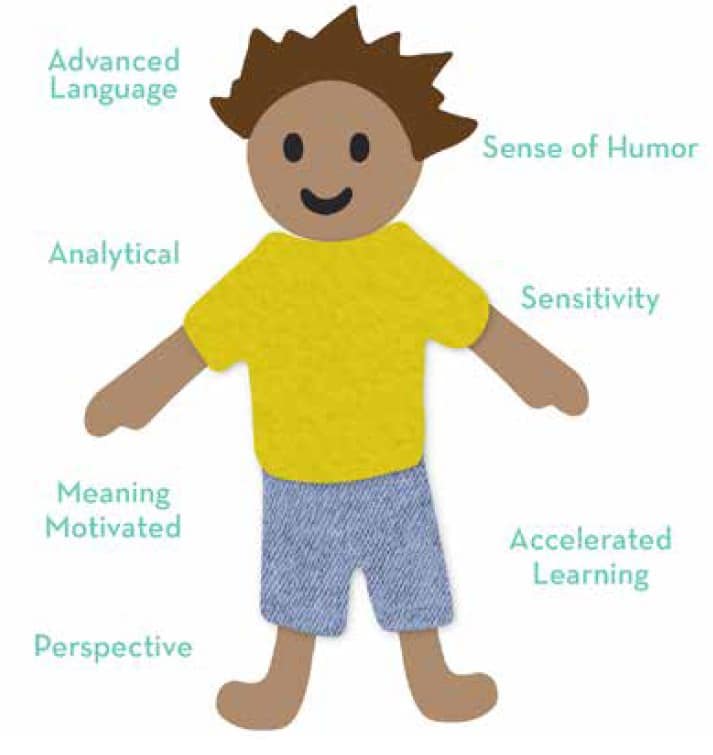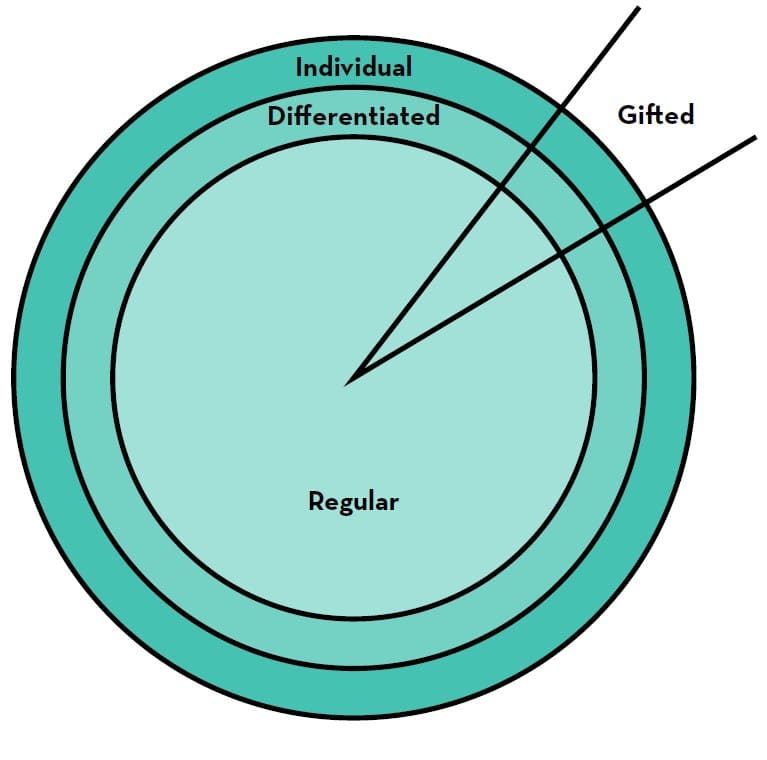This article was originally published in 1990 in Volume X, Issue 2, of TEMPO.
To be educationally defensible, an appropriate program for primary gifted children must be qualitatively different from that provided average children. It does not merely provide more of the same kind of experience or simply schedule experiences earlier and at a more rapid pace. To establish appropriate programs, educators must understand the unique characteristics and curriculum needs of primary gifted children and also be aware of the program models which are most appropriate for gifted young students.
Characteristics
Educators who intend to meet the needs of children begin by being aware of the unique characteristics of primary gifted students (see Figure 1). Those children characteristically have advanced language ability (in their first language), are highly analytical in their observations and thinking, strive for meaning in all experiences and keep at an issue until it makes sense, demonstrate unique perspectives in their art and understanding of multiple points of view, have a finely developed sense of humor, are intensely sensitive, and are capable of accelerated learning in their areas of interest (Kingore, 1990).

Knowledge of these characteristics enables educators to establish nurturing learning environments which encourage teachers to become “kid watchers” and respond to what kids are trying to do. When teachers observe a child’s behavior which is unclear or seems unique or even off-task, they are encouraged to ask the child about it: “Tell me what you’re thinking about.” “Help me understand your thinking.” Experiences such as these allow teachers to gain insight into the thinking and behaviors of gifted children and, thus, better meet the needs of the whole child.
Teachers do not just wait to see if these gifted behaviors accidentally occur. Rather, they select activities and strategies which allow all children to succeed while providing an opportunity for children to demonstrate what they are ready to do (Kingore & Higbee, 1988). Merle Karnes (1987), working with Head Start children, found that a nourishing program promoting higher level thinking resulted in significant gains for both nonidentified and identified gifted children. The goal is not to push children faster and harder, but rather to set up an encouraging and stimulating environment with a well-trained adult who is able to respond to the children’s leads. As Karnes (1987) noted: “We may be selling all children short on what they are capable of acquiring in the way of higher-level thinking skills.”
Programs which nurture these characteristics also provide increased opportunities for “difficult-to-find” gifted students to emerge. Minority students, bilingual students, disadvantaged students, and other special populations have historically been less represented in gifted programs partially because the identification process may have made it harder for them to reveal their abilities (Karnes, 1987; Roedell, Jackson, & Robinson, 1980; Tuttle & Becker 1983). Ongoing observation of many kinds of behavior in natural and challenging classroom environments has enabled more of these difficult-to-find children to exhibit their potential.
By focusing on these characteristics and observing children over a period of time, a profile of each child’s needs, talents, and interests can emerge. All gifted children are not alike; programs must respond to these characteristics and be more concerned with nurturing gifted children and meeting individual needs than with just affixing labels of ability.
Curriculum Needs
Curriculum needs for gifted primary students might be pictured as three concentric circles (see Figure 2). The center circle, the regular curriculum for all students, provides the core knowledge and essential elements of each subject area. It serves as the foundation for the construction of complex concepts and ideas. But, while gifted children need the regular curriculum, they must not be limited to its content. Gifted primary children are a unique population and thus require a differentiated curriculum as represented by the second circle. Ultimately, however, we must recognize that gifted children have vast individual differences in their interests and their intellectual, physical, emotional, and social development. Depending upon their individual profiles of abilities and interests, different children have very different needs. Thus, the largest circle addresses the need for curricula which respond to these individual differences. The individual aspects of the curriculum allow children to pursue their own areas of interest through individual projects and studies in which the teacher serves as a facilitator.

A program for the primary gifted thus involves an integration of the regular, differentiated, and individual curriculum. Each individual student’s needs are best met through a slice of this curriculum pie. Just as a slice of pie typically widens as it goes out from the center, an appropriate program for these gifted children strives to include more and varied differentiated and individually motivated experiences as the regular core curriculum is mastered.
Program Models
Several different program models have been developed which could be utilized with young children. Guilford’s Structure of the Intellect model is a complex look at multiple facets of abilities. The model and its implications for curriculum development are explained in detail in Mary Meeker’s (1969) The Structure of the Intellect: Its Interpretation and Uses. Frank Williams’ “Think-Feeling” model accents the interaction of emotional and intellectual development. The Williams model and multiple curriculum ideas related to each objective are developed in Classroom Ideas for Encouraging Thinking and Feeling, Books I and II (1970, 1986).
While Renzulli’s Enrichment Triad model (1977) and Bett’s Autonomous Learner model (Betts & Knapp, 1985) have largely been used with older children, primary children could benefit from many aspects of these models. The Enrichment Triad cultivates background and group building experiences in preparation for individual investigations which elevate the learner from a consumer of information to a producer of new ideas and products. What a primary child produces would obviously differ from the products of a much older student, yet still have original value for that child. Bett’s Autonomous Learner model intends to meet the diversified cognitive, emotional, and social needs of gifted and talented students and guide them toward becoming autonomous learners. For primary children, curriculum applications of the model are developed in Gavin’s (1989) Primary Activities: A Treasure Chest of Primary-Level ALM Exercises.
The main advantage in using one of these models is to help districts analyze program priorities and develop curriculum for the gifted. A model helps teachers define their task. It provides a structure for making the gifted curriculum qualitatively different and something more than a haphazard potpourri of activities. A planned curriculum based upon one of these models or even combinations of these models, allows administration of the program with freedom and flexibility. Indisputably, however, the key to effective programs for the primary gifted is the teacher. All models can be effective when teachers are well-trained in the education of the gifted, committed to the model’s objectives, dedicated to children and sensitive to the children’s needs. As Roedell, Jackson, and Robinson (1980) noted: “The intense interaction of teachers and children involved in learning about topics of interest to both may be the formula for producing an effective program, no matter which model is followed” (p. 89).
References
Betts, G., & Knapp, J. (1985). The autonomous learner model: For the gifted and talented. Greeley, CO: Autonomous Learning Publishing.
Garvin K. (1989). Primary activities: A treasure chest of primary-level ALM exercises. Greeley, CO: Autonomous Learning Publishing.
Karnes, M. S. (1987). Bring out Head Start talents: Findings from the field. Gifted Child Quarterly, 31, 174–179.
Kingore, B. W. (1990). The Kingore observation inventory: Identifying primary gifted. Des Moines, IA: Leadership Publishers.
Kingore, B. W., & Higbee, G. M. (1988). We care: A curriculum for 2 through kindergarten. Glenview, lL: Scott, Foresman.
Meeker, M. (1969). The structure of intellect: Its interpretation and uses. Columbus, OH: Charles E. Merrill.
Renzulli, J. (1977). The enrichment triad model: A guide for developing defensible programs for the gifted and talented. Mansfield Center, CT: Creative Learning Pross.
Roedell, W. C., Jackson, N. E., & Robinson, H. B. (1980). Gifted young children: Perspective on gifted and talented education. New York, NY: Teachers College Press.
Tuttle, F. B., & Becker, L. A. (1983). Program design and development for gifted and talented students. Washington, DC: National Education Association.
Williams, F. E. (1970). Classroom ideas for encouraging thinking and feeling. New York, NY: D.O.K. Publishers.
Williams, F. E. (1986). The second volume of classroom ideas for encouraging thinking and feeling. New York, NY: D.O.K. Publishers.
Bertie Kingore, Ph.D., President of TAGT in 1987, served as the Shelton Professor of Education, Graduate Studies, at Hardin Simmons University from 1980–1998. Since that time, she has shared her expertise as a national consultant who has worked with students, their teachers, and their parents for more than 30 years. She continues to work in classrooms to model the differentiation of instruction for all learners. She has been the keynote speaker for numerous conferences including Texas Association for the Gifted and Talented and the National Association for Gifted Children. Bertie also understands parents of gifted kids, as she and her husband, Richard, have raised three gifted sons.







